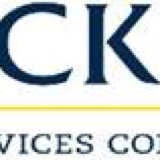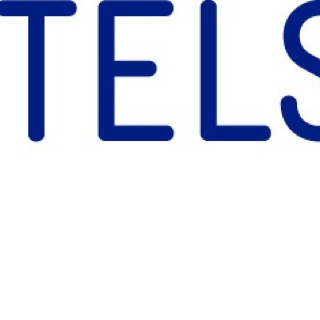Information
-
Audit Title
-
Document No.
-
Client / Site
-
Conducted on
-
Prepared by
-
Location
-
Personnel
-
Information on this form covers the minimum requirements of NFPA 25 for centrifugal fire pumps. Separate forms are available to inspect, test and maintain the rest of the fire protection system of which the fire pump is a part. More frequent inspection, testing and maintenance may be necessary depending on the conditions of the occupancy and water supply.
-
Owner:
-
Owner's phone number:
-
Owner's Address:
-
Property Being Inspected:
-
Property address
-
Date of Inspection:
-
This Inspection is:
-
All responses refer to the current inspection performed on this date.
-
Notes: 1) All questions are to be answered Yes, No, or Not Applicable. All NO answers are to be explained in Part III of this form. 2) Inspection, Testing and Maintenance are to be performed with water supplies (including fire pumps) in service, unless the impairment procedures of Chapter 11 of NFPA 25 are followed.
Part I - Owner's Section
-
A. Is the pump in service?
-
B. Has the fire pump remained in service since the last inspection?
-
C. Was the system 9of which the fire pump is a part) free of actuation of devices or alarms since the last inspection?
-
Note to owner: Periodic tests of transfer switches and emergency generators are to be performed by a qualified electrical contractor in accordance with NFPA 110.
-
Owner of Representative (print name):
-
Signature and Date:
Part II - Inspector's Section
A. Inspections
-
1. Pump house/room proper temperature (at least 70 degrees F for diesels without engine heaters or 40 degrees for others)?
-
2. Ventilating louvers free to operate?
-
3. Suction, discharge and bypass valves open?
-
4. Piping free from leaks?
-
5. Suction and system pressure gauges normal?
-
6. Suction reservoir, if provided, full?
-
7. Electric Motor Driven Pumps
-
a. Controller indicating power on, transfer switch indicating normal situation and isolation switch closed?
-
b. Reverse phase alarm indicator off or normal phase rotation indicator on?
-
c. Oil level in vertical motor sight normal?
-
8. Diesel Engine Driven Pumps
-
a. Fuel tank at least two thirds full?
-
b. Controller selector switch in Auto position?
-
c. Battery voltage and charger readings normal?
-
d. Battery indicators on or failure indicators off?
-
e. All alarm indicators off?
-
f. Record engine running time meter reading.
-
Is this appropriately higher than the previous reading?
-
g. Oil level in right angle gear drive normal?
-
h. Crankcase oil level normal?
-
i. Cooling water level normal?
-
j. Electrolyte level in batteries normal?
-
k. Battery terminals free from corrosion?
-
l. Water-jacket heater operating?
-
9. Steam pressure gauge for steam driven pump reading normal?
-
10. Circulation relief valve flowing water while pump churns?
-
11. Pressure relief valves operating with proper pressure downstream while pump is operational?
B. Tests
1. Weekly Test Items
-
A. Electric Motor Driven Pumps
-
1. Pump started automatically?
-
Record starting pressure. (PSI)
-
2. Pump run for at least 10 minutes?
-
Record suction & discharge pressure while running. (PSI)
-
3. Pump packing gland showing slight discharge?
-
4. Free from unusual noises or vibrations?
-
5. Packing boxes, bearings and pump casing free from overheating?
-
6. Record time for motor to accelerate to full speed.
-
7. For reduced voltage or reduced current staring record time controller is on first step.
-
8. For automatic stop controllers, record time pump runs after starting.
-
9. All times and pressures in Part A acceptable?
-
B. Diesel Engine-Driven Fire Pumps
-
1. Pump started automatically?
-
Record starting pressure. (PSI)
-
2. Pump run for at least 30 minutes?
-
Record suction & discharge pressure while running.
-
3. Pump packing gland showing slight discharge?
-
4. Free from unusual noises or vibrations?
-
5. Packing boxes, bearings and pump casing free from overheating?
-
6. Record time for engine to crank.
-
7. Record time for engine to reach running speed.
-
8. Engine oil pressure gauge, speed indicator, water and oil temperature indicator all reading normal?
-
9. Cooling water flowing from heat exchanger?
-
10. All times and pressures in Part B acceptable?
-
C. Steam Turbine-Driven Pumps
-
1. Record pump starting pressure, suction and discharge pressures while running,
-
2. Pump packing gland showing slight discharge?
-
3. Free from unusual noises or vibrations?
-
4. Packing boxes, bearings and pump casing free from overheating?
-
5. Record steam pressure gauge reading.
-
6. Record time for turbine to reach running speed.
-
7. All times and pressures in Part C acceptable?
2. Annual Tests
-
Annual pump test was run using the following method.
-
Method A:<br>Discharge of flow through hose steams. Flow readings taken at each hose steam.
-
Method B:<br>Discharge through by-pass flow meter to drian or suction reservoir. Flow readings taken by flow meter.
-
Method C:<br>Discharge through by-pass flow meter directly returned to pump suction. Flow readings taken by flow meter.
-
NOTE: At least once every three years method A or B must be used.
PUMP TEST RESULTS
-
Suction Pressure:
-
No Flow
-
Rated Flow
-
Peak Flow
-
Discharge Pressure:
-
No Flow
-
Rated Flow
-
Peak Flow
-
Flow Pressure:
-
No Flow
-
Rated Flow
-
Peak Flow
-
Electric Voltage and Current:
-
No Flow
-
Rated Flow
-
Peak Flow
-
Pump Speed:
-
No Flow
-
Rated Flow
-
Peak Flow
-
See Attached:
-
A. Are the values in the above table acceptable?
-
B. NO-FLOW (chum) test run for 30 min.?
-
C. Circulation relief valve and pressure relief valve operated properly during all flow tests?
-
D. No alarm indicators or other visible abnormalities observed during no flow test?
-
E. Suction screens cleaned after flow?
-
F. Low Suction Throttling Devise Test
-
1. Low suction pressure simulated?
-
2. Free from abnormalities in throttling action?
-
3. Free from abnormalities in return to full flow?
-
G. Automatic Transfer Switch Test
-
1. Power Failure simulated during peak flow?
-
2. Connection made to alternate power source?
-
3. After termination of simulated power failure did motor reconnect to the normal power source?
-
H. Alarm Condition Test
-
1. All Alarm Conditions Simulated?
-
2. All Alarms operated?
C. Maintenance
-
A maintenance schedule must be established in accordance with the manufacturer instructions. In the absence of such a schedule, the following must be used:
-
1. Weekly Maintenace Items for Diesel Engine Systems:
-
A. Fuel tank level, tank float switch, and solenoid valve operation acceptable?
-
B. Diesel fuel system free of water?
-
C. Flexible hoses and connectors in fuel and coolant systems acceptable?
-
D. Oil level and lube oil heater acceptable?
-
E. Coolant level acceptable?
-
F. Water pump for coolant system operating?
-
G. Jacket water heater for coolant system acceptable?
-
H. Exhaust system free of leakage?
-
I. Drain condensate trap on exhaust system operational?
-
J. Electrolyte level in batteries acceptalbe?
-
K. Connections to electrical system acceptalbe?
-
2. Monthly Maintenace Items:
-
A. Isolation switch and circuit breaker exercised?
-
B. Battery case clean, dry and free of corrosion and battery's specific gravity or state of charge passed test?
-
C. Charger and charge rate passed visual inspection and battery charge being equalized?
-
D. Circuit breakers appear clean?
-
3. Quarterly Maintenace Items:
-
A. Cleaned strainer, filter or dirt leg in diesel fuel system?
-
B. Cleaned or replaced crank case breather in lubrication system?
-
C. Cleaned water strainer in coolant system?
-
D. Insulation acceptable and fire hazard eliminated from exhaust system?
-
E. Battery terminals clean and tight?
-
F. Electrical system free of wire chafing?
-
4. Semiannual Maintenace Items:
-
A. Manual starting means on electrical systems operated and boxes, panels and cabinets cleaned?
-
B. Antifreeze tested in coolant systems?
-
C. Flexible exhaust section acceptable?
-
D. Alarms operated on electrical portions of diesel engine systems?
-
5. Annual Maintenance Items
-
A. Changed pump bearing lubrication?
-
B. Shaft end play acceptable?
-
C. Transmission coupling right angle gear drive and mechanical moving parts lubricated?
-
D. Circuit breakers passed trip test?
-
E. Emergency manual starting means operated without power?
-
F. Electrical connections secure?
-
G. Pressure switch settings calibrated?
-
H. Motor bearing greased?
-
I. Fuel tank free of water and foreign material, tank vents and overflow pipes free of obstructions, fuel piping acceptable, and oil and filters changed in diesel systems?
-
M. Antifreeze changed in coolant systems?
-
N. Heater exchanger cleaned out?
-
O. Duct work & louvers (combustion air) acceptable?
-
P. Exhaust system free of back pressure?
-
Q. Exhaust system hangers and supports acceptable?
-
R. Control and power wiring tight?
Part III
-
Notes:
Part IV - Inspector's Information
-
Inspector Name:
-
Company:
-
Address:
-
I state that the information on this form is correct at the time and place of inspection, and that all equipment tested at this time was left in operational condition upon completion of this inspection except as noted in Part III above.
-
Inspector:
-
Select date
-
License or Certification Number (if applicable):
Backflow Preventer
-
Tested for NFPA 25 Requirements ONLY. Certification DOSE NOT fall within the scope of this inspection.
Fire Alarm
-
Inspection & Certification is to be performed by an Alarm Contractor.
Fire Extinguisher(s)
-
Inspection & Certification is to be performed by Others.
NFPA 25 2008:4.1.5 "Changes in Occupancy, Use, Process, or Materials"
-
The property owner or occupant shall not make changes in the occupancey, the use or the material used or stored in the building without evaluation of the fire protection systems for their capability to protect the new occupancies, use or materials.
NFPA 25 2008:4.1.6 "Addressing Changes in Hazard"
-
Where changes in the occupancy, hazard, water supply, storage commodity, storage arrangement, building modification or other condition that affects the installation criteria of the system are identified, the property owner or occupant shall promptly take steps, such as contacting a qualified contractor, consultant or engineer, and authority having jurisdiction, to evaluate the adequacy of the installed system in order protect the building or hazard in question.











